This is a story of everyday researchers and teachers, struggling to do their job in a world pervaded by management bollocks.
This page is a continuation of the diary that started in June 2007, with the demise of UCL’s Pharmacology department (for the time being). It continued
- from June 2008 to May 2009 on a separate page.
- From June 2009 to May 2010
- From June 2010 to May 2011
- From June 2011 to May 2012
- From June 2012 to May 2013
Now we continue from June 2014.
Links. Most items on this page can be linked directly by appending the date to the page link. For example https://www.dcscience.net/?page_id=4473#210312 takes you directly to the entry for 21 March 2012.
11 June 2013.
Off to Brighton for another Skeptics in the Pub talk. They are lovely events -people of all ages, predominantly young. I feel more at home with them than with the grandees of the Royal Society. The Charlotte of Brunswick was an “alternative rock” pub, but there weren’t as many tattoos and piercings in the back room where the talk was. Loved the graffito in the loo.
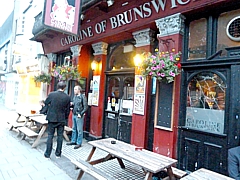 |
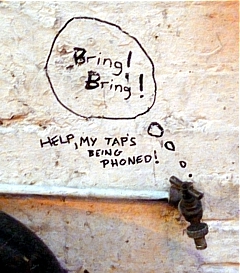 |
12 June 2013. Went to another celebration of the passing of the Defamation Act (2013), this time at The Free Word Centre. Having had five legal threats, I can’t wait for it to come into force.
21 -28 June 2013
Left for USA. First stop, Cold Spring Harbor Labs, where I’d been asked to talk on “Is ‘Allosteric’ a Useful Word? What Single Ion-Channel Measurements Say”.
Then further east on Long Island on to Stony Brook University to see an old friend, Lorna Role, now chair of the Department of Neurobiology and Behavior there. Gave a talk there too: “The rise and rise of quackademia in the USA and it’s implications for trust in science”.
Then took the ferry from Port Jefferson to Bridgeport, CT. Clifford Slayman (of Yale’s Department of Physiology) drove us to New Haven. The next day, I did both talks, Then up at 04.30 next morning to leave for JFK and home. Knackered.
There are pictures of the trip in the album (click to open).
2 July 2013
Needed some rest so worked mostly from home, especially when temperatures reached 30° C. Looked at roses, and bees in the lavender bush.
3 July 2013.
Went to Royal Society Summer Science exhibition (“Dinner jacket. Decorations will be worn”).
|
I wore my London marathon medal. on the grounds that getting it took more work to get it than most knighthoods. Fortunately this seemed to amuse Julie Maxton, executive director of the Royal Society, rather than being regarded as insubordination. I was greeted cordially enough by the president, Paul Nurse, despite my writing about Prince Andrew (he said it “caused him a lot of trouble”, though I’m not sure why it should have done). |
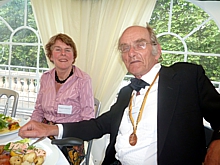 |
I met old friends Ken & Mary Holmes over the meal. He’s a crystallographer and was head of the Biophysics division of the Max Planck Institute,Heidelberg, while I was there in 1990 -91. He was a champion rower, and he beat me by a few seconds in the 1991 Heidelberg half-marathon (strangely he recalled my beating him -not so).
After that I didn’t have much time to look at the exhibits. The first one I saw was horrifying. It was just the sort of thing that aromatherapists love (sadly some very amiable and well-motivated school children had been misled into doing the project). Of course aromatherapy wasn’t mentioned in the exhibit, but it was in the reference.
Never did I think I’d see the Royal Society fall for the bait and switch methods of quacks. If you think that is an exaggeration, just look at the way it was exploited in the House of Commons by the government’s resident medical loon, David Tredinnick (Con. Bosworth),
4 July 2013.
|
Up at 05.00 to get to Manchester for the Festival of Public Health. I wanted to be early enough to here the other speakers, before my talk, “Privatisation in the NHS and the doors that it is opening for quackery”. It was a shock to be asked to be a keynote speaker at a public health meeting, but the talk seemed to be well-received, and got quite a lot of laughs. it’s a rather different audience from usual. I was particularly impressed by John Newton, of Public Health England. |
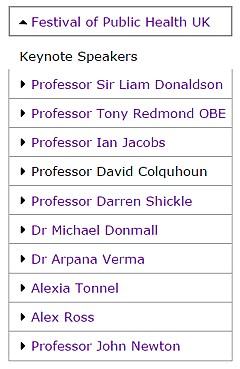 |
Luckily a new organisation, Centre for Health and the Public Interest, had just published its first report. “Healthcare Fraud in the new NHS market – a threat to patient care“. Plenty of material there. It’s a pity that the huge G4S fraud scandal didn’t surface until after the talk.
The meeting had many stands where commercial organisations were trying to sell their services to the NHS. I asked a few how they knew their interventions were effective. I got no satisfactory answers. Most had no idea how to go about doing such tests. And of course it is in their own financial interests not to test them. They would have made good examples for my talk.
5 July 2013.
Being in Manchester, I went to visit Rosi Sexton about by back problems. Although she trained as an osteopath she is 100 percent clear about what’s evidence and what isn’t. She’s a truly remarkable woman. She was an accomplished musician, then went on to get a first in mathematics at Trinity College Cambridge (her tutor was the great Tim Gowers).
|
She then did a PhD in Theoretical Computer science in Manchester. But she seems to be a person who wants to excel in everything. She then became a world class athlete in mixed martial arts and runs a sports injury clinic. I don’t think I’ve ever met anyone with a wider range of talents. Then lunch with Rosi, and home, very tired. |
8 – 12 July 2013.
Five days of teaching on our annual summer workshop, “Analysis and interpretation of single ion channel records and macroscopic currents using matrix methods”. The opening of the course points out that the advertisment for a rival course from the University of Buffalo, NY gives as a primary reason for doing their course is that there is “1. No need to program or understand Colquhoun and Hawkes”. We take the view that it’s better to understand what you are doing, and the course is designed to teach that. By the end, they could all evaluate equations like that for the probability density function for the burst length distribution, and had at least a rough idea about how it was derived.
\[ f_{bst} \left( t \right) = \phi_{b }\left[\exp\left(\mathbf {Q}_\mathcal{EE}t\right) \right]_\mathcal{AA}\left( Q_\mathcal{AB}G_\mathcal{BC}+Q_\mathcal{AC}\right) u_\mathcal{C} \]
There is a course photograph at OneMol.org.uk
16 July 2013.
|
Milton Keynes Skeptics in the pub. Another talk, and another group of (mostly) young people. Bright and genuinely enthusiastic to do something to improve the world. |
19 July 2013.
|
Today I’ve somehow made it to 77. It feels like a couple of years since I first walked into UCL (that was 1964). Where has the time gone? Now I can’t run, so all I have is nostalgia. I guess that is why I scanned some old pictures and made an album of the energetic things I used to do when not working. |
Margaret’s birthday card (left) gave me a laugh. On the right, that’s me with the real Lonesome George, taken on a trip to the Galapagos, in 2000 (more Galapagos pictures here)
20 July 2013
Last night the Today programme phoned (as I was in the middle of the unpleasant bowel cleansing process .that one has to go though before a colonoscopy). They wanted to talk about today’s Daily Mail headline.
That was too good a chance to turn down. The promised cab didn’t turn up, so I had to drive myself (I hope they pay speeding fines). I got to the studio with 2 minutes to spare, only to find that the “balance” was to be provided not by the reasonable Baroness Finlay (as I’d been told last night), but by the totally unhinged David Tredinnick MP (Con, Bosworth). It’s a great pity they couldn’t find a more sensible opponent. Luckily, I’d just read his utterly delusional speech of 9th July (see also 3 July, above). This time the interview was by the formidable John Humphrys himself. Luckily he was quite kind.
 Listen to the audio interview here
Listen to the audio interview here
Then drove back to hospital. It was spotless, friendly and efficient. I still love the NHS. Endoscopy hasn’t been sold off the some privateer. I hope it never is.
4 August 2012
Alex Renton wrote a good piece about sugar in today’s Observer. I was quoted quite briefly but nevertheless the article elicited over 6000 extra hits on this blog on Sunday, and a few 100 extra followers on Twitter. I earned my keep by contributing a lot to the comments (over 700 of them). As usual when it comes to diet and nutrition, the comments were filled with people who were sure they knew the answers. As usual, the answers were not all the same. It was a good chance to explain the limits of observational epidemiology and the importance of randomisation.e.g. here.
6 August 2013
Jeremy Hunt renounces homeopathy on Radio 5 Live Breakfast show. The Health Secretary says that he signed an Early Day Motion that supported homeopathy by mistake. More likely, he didn’t know what homeopathy means. It’s quite encouraging that a politician as devoted to expediency as Hunt has changed his mind: it shows that it is now not respectable to support homeopathy.
This development led to some interview requests. BBC World News TV pitted me against Sara Eames, president of the Faculty of Homeopathy. When challenged about the lack of any molecules in her pills, she said
“We think the explanation for homeopathy comes from physics not from chemistry, so the molecules are less important”
That’s a classic. If you live in a parallel universe, it seems that molecules don’t exist in physics.
Hunt’s words are repeated at the start of this clip from the next day’s Radio 6 Live Breakfast, followed by an interview with Sara Eames and me (but the TV version is better).
15 August 2013
|
Went to Liverpool for talk at Merseyside Skeptics. Quite a big, largely more-or-less young, audience. A wonderful group of people who are passionate about critical thinking. |
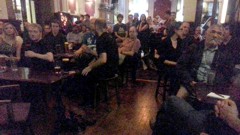 |
Excuse the immodesty, but can’t resist quoting a tweet from a young public health worker. Strangely, perhaps, I feel perpetually sensitive about the fact that I spend so much time being critical about people and things. So comments like this are very reassuring. The sentiments are entirely reciprocated. Pleased to meet you Siobhan.
Absolutely delighted, charmed & honoured to meet @david_colquhoun this evening. A true scholar, gent & fab talk. Thanks! Cc @merseyskeptics
— Siobhan Farmer (@siobhanfarmer) August 15, 2013
|
On the way home, Virgin provided a good breakfast on the pendolino. (OK, I admit it, I went 1st class, something I never did while working). Trains are the only way to travel (if you can afford them -privatisation has been a huge rip-off for the taxpayer: and now it’s happening in the NHS). |
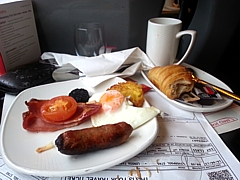 |
20 August 2013
On 14th August, the Faculty of Homeopathy boasted that “medical doctor demolishes”, uh, me. They must be more stupid that I thought to give publicity to the interviews. This was soon spotted and some sensible, and more-or-less polite, comments were added by me, Guy Chapman and Joss Brown. This is how it looked on Friday 16th August. By Tuesday 20 August, the Faculty had noticed the comments and deleted them. That sort of childish behaviour shows that they haven’t the slightest interest in discussion. All quacks are welcome to post in this blog. I’ll respond to them, not delete them.
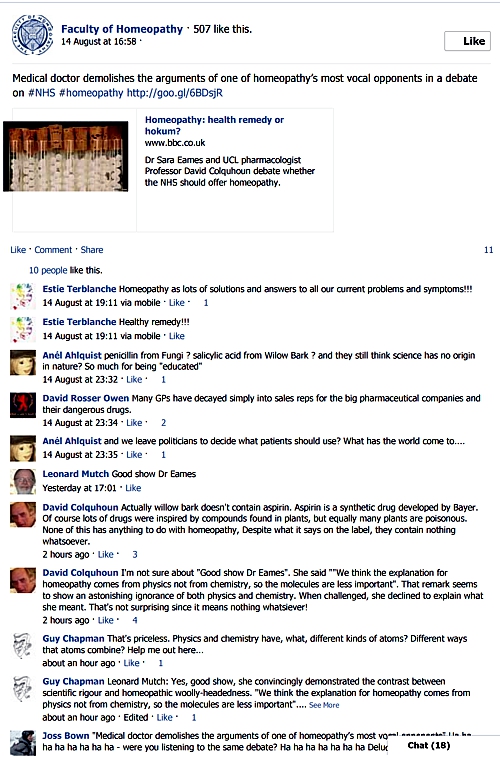
22 August 2013
At around 6 pm this blog went off the air. A quick check revealed that it had been the subject of a DDOS attack (distributed denial of service), which came from lots of places in Eastern Europe and Asia. Some sterling work by the wonderful people at Positive Internet, with help from the equally wonderful Alex Lomas, contained the damage and got me up and running again after 30 hours or so. The attack seems to have died down now. As a precaution, a range of IP addresses in Beijing have been blocked. It took until Tuesday 27th to get FTP working again, so I could put up a new post. There is no reason to think the attack was aimed at me personally -more likely it was a random attempt to plant malware. The worst seems to be over now.
7 – 14 September 2013
Drove slowly down to Plymouth, with stops in hotels in Dorset and Dartmouth, to give my usual two talks at the Microelectrode Techniques for Cell Physiology: course. This was the 30th time this course has run. I’ve talked about analysis and interpretation of single ion channel recordings at every course since they started in 1984. The only exception is the 1990 course, when I spent a happy year living in Heidelberg, working with Bert Sakmann.
Although founded by the late Anne Warner, it has been run from the start by David Ogden. On this picture, taken during the 2001 course, David Ogden is on the left, and I think the person with her back to the camera is Anne Warner.
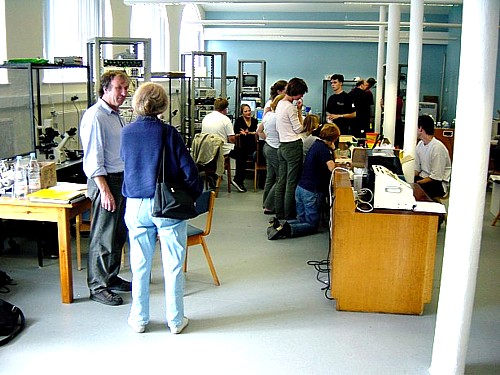
In 2004, I got to the course within a week or so of having my right hip replaced. The course photograph for 2004 shows David Ogden (8th from left, blue shirt) and, on the right, me with crutch.
Over 600 students have done the course and the world of electrophysiology owes David Ogden a huge debt. He’s put a phenomenal amount of work into the course, as well as doing great research.
I go back a long way with David Ogden. When I first arrived at UCL he was a technician who worked in my lab. While I was away at Yale, he got his PhD in UCL’s late great Biophysics Department, while Bernard Katz was its head. His supervisor was Rolf Niedergerke (read his obituary). Like David, Rolf was a wonderfully modest scientist, but many of his 50 papers are still influential. They are both the sort of scientists that I most admire. Dedicated, modest, not pushy or overcompetitive, people who prefer quality to quantity. In these days of paper-counting and impact, it’s quite probable that both would have been fired (as I would myself). The world would have been a poorer place if that had happened.
After I came back to UCL in 1979, David Ogden rejoined me, now as a postdoc. He and I soldered together our first patch clamp, before you could buy them off the shelf. We spent some time trying to find the quietest 50 gigohm resistors. He was a pioneer in single ion channel field and did some really excellent work in the 1980s, but then moved on to the National Institute for Medical Research at Mill Hill. When that folded, he moved to Université Paris Descartes,
David Ogden has a deep grasp of electronics and of microscopy, and he’s also a wonderful experimenter. If anyone can make it work, he can. That’s an attribute that he shares with Andrew Huxley and Bert Sakmann. Most of the best scientists I know care deeply about how their apparatus works, and like to do experiments themselves. Both of these attributes are discouraged strong;y by present research policies.
The Plymouth course originated at UCL and still every year UCL people contribute to the course. Here is a picture of my present boss, Lucia Sivilotti, teaching students in Plymouth in 2001,
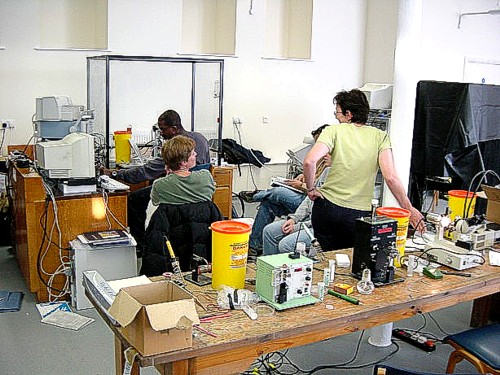
This year, our brilliant senior research fellow, Remigijus (‘Remis’) Lape, was once again showing students how to get results, And I listened to an ex-postdoc, Stephanie Schorge giving students a superbly practical account of how to do series resistence compensation.
Remis appears in a movie made by Scientifica, one of the companies that lends equipment for the course. As they say, you may not need to do much soldering now, but “you still need to know what’s in the box”. The same applies to computer programs, which is why we run a course at UCL to explain what’s being calculated..
Here are a couple of stills from the movie.
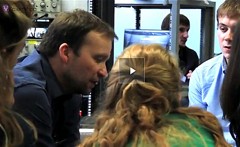 |
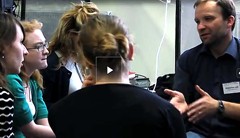 |
One of the pleasures of Plymouth course is to take the Cremyll ferry into Cornwall, on the free Sunday, and walk to Rame Head (with a pause in Kingsand on the way back). The blue line is a GPS track for the walk on 15 September 2002 (15 miles, 3.6 mph). Now my damned spine means I can no longer do it.
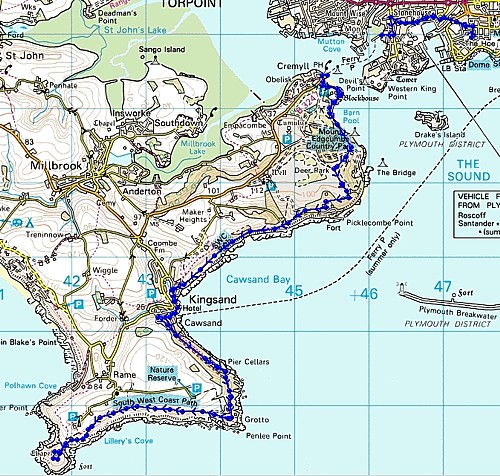
|
The other pleasure is eating in Platters. It looks like a downmarket café, but the fish is straight from the sea, and the portions are enormous. |
|
18 September 2013
Just as the glorious summer is over, we finally got solar PV installed on flat garage roof. It’s said to be 4 kW peak, but once it was up, on a cloudy evening, it was producing only 400 W.
I was intrigued to discover that they produce more in cold ambient temperature than hot. Roll on the winter sun.

The next few days were all cloudy,but still got up to 1.1 kW near midday.
22 September 2013
After Sunday walk (now much abbreviated) came back to find a small butterfly in the garden.
We couldn’t identify it, so put it to the twittersphere
“Can anyone identify this small butterfly (on Bidens aurea)?”
Within 1 minute, I had the answer. Heather Furse (@rehtaeh1) (bee keeper, Kent) said “small copper” and clearly she’s right. Two more right answers soon came in, and a good joke.
@david_colquhoun Thats Alice. She’s always on that flower, loves that corner of the garden.
— LeDroit (@LeDroit1) September 22, 2013
Who says twitter isn’t useful?
13 October 2013
Here are the results of the first week of solar PV, as measured with an Owl Intuitive PV.

Only 6th October had much sun, and on that day generated almost is much as we imported, much of it exported. Friday 11th was gloomy and wet -extra consumption was probably hot wash. Since first installed on 19 September we’ve generated 144 kWh.
9 November 2013
The Science Online conference is organised by Nature. I’ve been once before but it’s rather expensive, so I was glad to be asked to speak at this year’s meeting. Its previous self-explanatory name has been changed to the utterly uninformative SpotOn London meeting. I was on a panel that discussed “altmetrics”, the latest daft idea of the bibliometrics folks.
I thought I wouldn’t make the meeting because I’d been develeping an ever more painful compressed nerve that produced excruciating pain in my right arm as soo as i stood up, and sometimes when sitting. I got there only by getting a car door to door, and being pushed round in a wheel chair for the whole day. The video recording of the meeting is online (I’m in wheel chair at far end if the table, and the slides are invisible (my bit starts at 24 minutes).
The flavour is given by my first slide
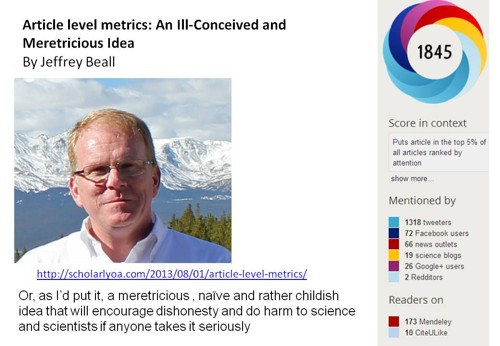
15 Nov 2013
During the following week the pain got worse, but on Monday 11 Nov, the National Hospital, Queen Square, gave me an MRI which confirmed a problem with the C8 nerve root. I was barely able to stand. By Thursday the pain was so bad I spent the day in bed. I had to wait until Friday 15 Nov (to come off warfarin) before I could get a C8 nerve root injection (local anaesthetic + steroid, bupivacaine + triamcinolone). I can’t say I had huge faith in the procedure, but the effect was near miraculous, Dr Prem Rangi must have it the right spot (with help of CT scanner). So far (18 November) the pain hasn’t returned despite the fact that the local anaesthetic has worn off. Medicine is truly wonderful when it works.
Once again I have reason to be hugely grateful to the NHS. Don’t let Cameron sell it off to his friends.
This paragraph of the coalition agreement was a straight lie.
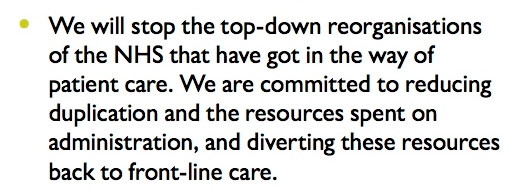
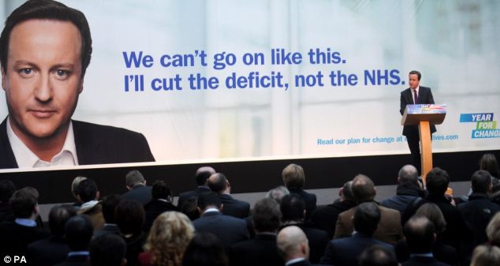
27 November 2013 First time on the lab after nerve compression crisis.
UCL is now so big that one sometimes meets colleagues through twitter, and one such case is Hannah Fry (@FryRsquared), a lecturer in mathematics at the Centre for Advanced Spatial Analysis. We met for lunch with her and a colleague. She was a lot of fun (and one can’t know too many mathematicians).
Then, in the evening, a talk for the UCLU Atheist, Secularist & Humanist Society. Met some excellent undergraduates with well-developed critical faculties. One medical student grumbled that they’d been exposed to a GP who advocated the most obvious of all scams, homeopathy.
5 December 2013
Twitter exploded on the news of the death of Nelson Mandela. There were many moving tributes. I can’t put into words what he’s meant to me, throughout most of my life. I was 26, and halfway through my PhD, when he was jailed in 1962. I was 54, and already a professor for seven years, when he was released in 1990. I feel I have known him forever.
|
I recall vividly the indignation of conservatives when Ken Livingstone’s Greater London Council commissioned the bust of Mandela that stands next to the Royal Festival Hall. It was erected in 1985, and every time I pass it a tear wells up. Margaret Thatcher was in power at the time. She condemned Mandela aa a communist terrorist and supported the suppression of the ANC. Ronald Reagan supported the apartheid regime as strongly as Thatcher. |
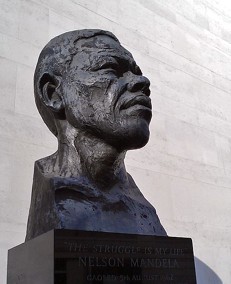 |
He had a huge influence on my political thought. Seeing the people who condemned him so strongly, fawning after his release has served as a constant incentive to stay politically active. I was reminded of the hypocrisy of politicians again by a tweet from George Aylett which attached this picture.

I don’t know the origin of this picture, but another tweet led me to an article in the South African Mail Guardian, “Margaret Thatcher’s shameful support for apartheid“.
“In 1984, Thatcher became the first British prime minister in 23 years to host an apartheid head of state. Three years later, she declared: “The ANC is a typical terrorist organisation.” Her stance fostered a toxic ethos within her party. Thatcher’s most loyal Cabinet colleague, Norman Tebbit, called Mandela a “terrorist”. South Africa hosted regular apartheid-sponsored visits from Tory MPs, and Young Conservative leaders wore “Hang Nelson Mandela” badges.”
“Eventually, in 2006, Conservative leader David Cameron admitted they had got it wrong and that Mandela was “one of the greatest men alive”.”
I do hope his apology was more than mere political expediency. His attempts to detoxify the “nasty party” have been looking a bit thin recently.
18 December 2013
The BMJ published one of its Christmas joke papers, The survival time of chocolates on hospital wards: covert observational study. Cadbury’s Roses vanished a bit more quickly than Nestlé’s Quality Street (good!). The survival curves were more or less exponential, but the authors referred to an “initial rapid ‘grab’ phase”. Always eager to spot a stochastic fallacy, I left a rapid response (often known, in the BMJ, as a ‘rabid response’).
|
Very nice. But I’m not so sure that it’s right to talk about an “initial rapid “grab” phase”. Insofar as the survival function is exponential, the distribution of survival times follows an exponential probability density function. That is characteristic of a Markov process in which the probability of an individual chocolate being eaten in the next second (say) is independent of how long it has already survived. In other words the process is entirely random. The reason that the survival curve falls rapidly at first is is merely a consequence of the fact that random (exponentially-distributed) intervals have more short (below the mean) intervals than long intervals (though the latter occupy more of the time). In fact the curves may not be exactly exponential. Could that perhaps be because many people prefer the red ones to the green triangles? I look forward to the follow-up study. Reference Colquhoun, D. Lectures on Biostatistics, Clarendon Press 1970 (available athttps://www.dcscience.net/Lectures_on_biostatistics-ocr4.pdf ) |
20 December 2013
Who says Twitter isn’t useful? As a result of a tweet, the new head of the Wellcome Trust, Jeremy Farrar, offered to meet me to talk about grants. He’s a really nice guy and we seemed to agree about most things. I think he realizes that it was a mistake for the Trust to abolish three-year project grants.
24 December 2013
Christmas eve. At home. blazing fire, christmas tree, too many sweets (and too much TV). Love it, though not quite the same since my son flew the nest.
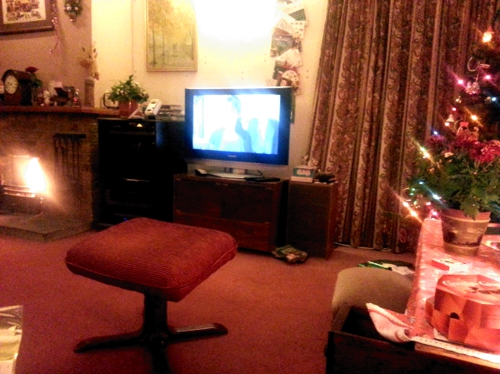
25 December 2013
Some perfect presents. To learn more about the non-transitive dice, read the book or watch a video.
29 December 2013
Time for end-of-year roundups. There is a gimmicky video of my top tweets (I presume that means the most retweeted ones) showed that I interacted most often with @StephenSenn, statistician and expert on clinical trials. ‘Twas ever thus. Also a list of my top ten tweets
Science jokes
This Sunday the Observer carried a list of scientists’ jokes. My favourites (apart from my own) were from mathematician Max Little
There are 10 kinds of people in this world, those who understand binary, and those who don’t.
The only one that made me laugh out loud was from Alan Turnbull (National Physical Laboratory)
The floods had subsided, and Noah had safely landed his ark on Mount Sinai. “Go forth and multiply!” he told the animals, and so off they went two by two, and within a few weeks Noah heard the chatter of tiny monkeys, the snarl of tiny tigers and the stomp of baby elephants. Then he heard something he didn’t recognise… a loud, revving buzz coming from the woods. He went in to find out what strange animal’s offspring was making this noise, and discovered a pair of snakes wielding a chainsaw. “What on earth are you doing?” he cried. “You’re destroying the trees!” “Well Noah,” the snakes replied, “we tried to multiply as you bade us, but we’re adders… so we have to use logs.”
8 – 9 January 2014
|
Back to Cumberland Lodge, for the biology students away day. The theme was “competition and collaboration in science”. I gave the opening talk about sources of corruption in science. It was fun to talk to some very smart undergraduates. |
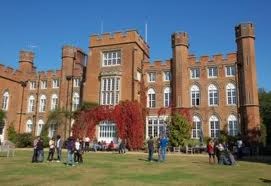 |
Unfortunately, the last talk before lunch was about “handling museum objects” as form of therapy. It’s two years since I first came across this idea. At the time I got hold of all the papers. They were done very poorly. I tried to provide some constructive feedback at the time. So I was astonished to find, two years later, bar charts with no standard errors and trivial effect sizes, still being shown. After the talk my blood pressure was a bit high, and I said to the students that they’d just heard a good example of how science shouldn’t be done. I think the students were a bit taken aback, and I should have mentioned that I was already familiar with the work. At least they saw science red in tooth and claw. Perhaps it’s worth a full blog post, if only to persuade the students that I wasn’t exaggerating.
17 January 2014
There are few subjects that get me quite so upset as World War 1 (as here)
The New York Review of Books carried a review of several books about WW1. It was written by Robert. J. W. Evans (Regius Professor of History Emeritus at Oxford). I was so struck by its opening that I tweeted
If you can’t get further, read th first 3 paras of @RichardEvans36 ‘s piece about origins of #WW1 http://t.co/5fFIfScREX
I got a quick correction from @RichardEvans36, who is Richard J. Evans (Regius Professor of History at Cambridge), who pointed out that it was not he, but Robert Evans who had written the review. Richard Evans had been in the news for his opposition to our absurd Secretary of State for Education, Michael Gove, who wants to turn tne centenary of WW1 into an occasion for cheap jingoism. Richard Evans wrote Michael Gove’s history curriculum is a pub quiz not an education, and Michael Gove shows his ignorance of history – again.
I found Robert Evan’s opening paragraphs a succinct description of how the vanities of a handful of men caused turmoil and death for half a century. Here they are.
“June 28, 1914, Sarajevo, Bosnia. The Archduke Franz Ferdinand, heir to the multinational Habsburg realms, resplendent in the dress uniform of an Austrian cavalry general, but also absurd in his plumed headdress, was shot at close range by Gavrilo Princip, a local student dropout obsessed with the Serbian national cause. Sarajevo was one of history’s most purple passages: there was the drama of bungled security and hamfisted conspiracy; spectacle and gore; the play of intention and chance; the clash of generations and civilizations, of the old monarchical Europe and the modern terrorist cell.
But of course the Sarajevo assassination captivates posterity for its consequences. Piqued in its prestige and fearful of the threat to its status as a great power by subversion fanned from Serbia, the Austro-Hungarian government delivered an ultimatum to its obstreperous little Balkan neighbor, demanding a say in the management of its internal affairs.
Russia stepped in to protect its Serbian clients; the Germans supported their Austrian allies; the French marched to fulfill their treaty obligations to Russia; Great Britain honored its commitment to come to the aid of France. Within five weeks a great war had broken out”.
What a tragedy, even before we get to lions led by donkeys.
8 March 2014
A lifetime ambition was fulfilled. We went to the new production of Oh What A Lovely War, at the Theatre Royal, Stratford East. I was a PhD student in Edinburgh at the time of Joan Littlewood’s original 1963 production, so didn’t see it. I’ve long been a fan of the film (short clips). It’s one of the best I have ever seen. So I wondered how it would look on stage. The production was sheer genius. If you get a chance to see it, don’t miss it.

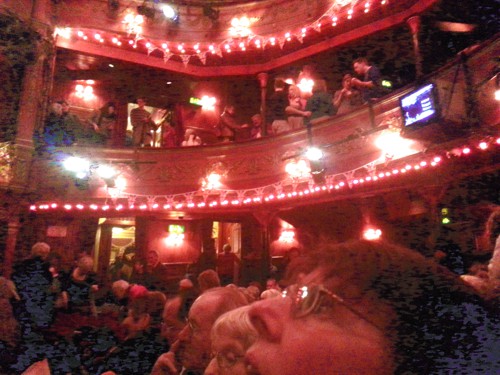
.
There is a good Radio 3 radio programme about the show.
And here is a picture of the theatre in 1963 (from BBC)
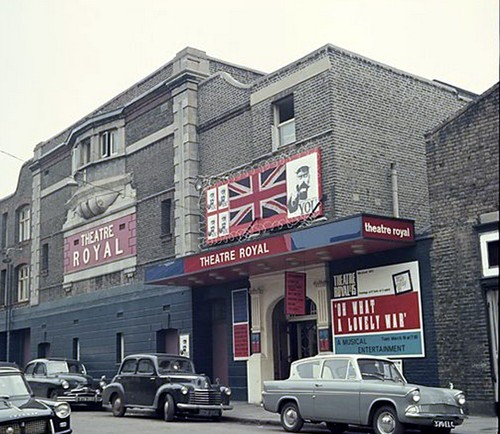
12 March 2014. My first visit to Kingston University (that’s a post-1992, ex-polytechnic). I was asked by the student pharmacology society.The students were charming and bright, They couldn’t make up their mind whether they wanted me to talk about ion channels or more general problems or ion channels, so I did 30 minutes on each (always a mistake). They were unaware of the power of matrix algebra (but no more unaware than UCL students would be). I went on to talk about problems of irreproducibility in science and talked about screening problems (my most recent post) and then a quick discussion of the interpretation of P values. None of them could produce an accurate definition of what a P value means. But that is another thing that they share with UCL students (and with many of their teachers too).
13 March 2014. The Guardian published a letter, signed by over 100 people, which deplored the prominent sponsorship of the Big Bang Fair by arms manufacturers, including BAE and Doosan (a company that has been involved with the manufacture of cluster bombs). The Big Bang Fair is the UK’s biggest youth science and engineering education event. My guess is that many young people will be deterred from science if they get the impression that much of it is devoted to inventing bigger and better ways of killing people. The letter was initiated by Dr Alice Bell, so I was surprised (but not displeased) to find myself listed as the first signatory.
18 March 2014
Back to Southampton again. This time for a talk to biology postgraduates, about diet myths and statistical myths. The room was so packed that my old friend Chris Anthony couldn’t get in. He went back to the excellent staff club and chatted with my wife and her 92-year old mother (we don’t like to leave her for too long so she came with us on the 160 mile drive, People are very kind.
Today a letter appeared in the Guardian, We need more scientific mavericks. It was written by UCL’s Donald Braben, but I agreed with enough of it to sign it. It came in for some criticism from the excellent Jennifer Rohn (also from UCL), and some of what she said, I agreed with (see comments). On the strength of the letter, I got asked by the British Medical Journal to write an editorial about scientific mavericks, so I’ll be able to put my own opinions there.
20 March 2014
Went to talk at the Cambridge Science Festival. It was a really excellent day. Our host was the excellent Yvonne Nobis, Head of Science Information Services at two of Cambridge University’s magnificent libraries (@yvonnenobis on twitter). I met her at the Science Online meeting in November, when she supported my views on the absurdity of altmetrics. She also shares my interest in the profiteering behaviour of science publishers like Elsevier. She took us to one of her libraries where we got to hold in our own hands original editions of the short version of Vesalius’ anatomy (1543) De humani corporis fabrica librorum epitome (Abridgement of the Structure of the Human Body). The colours are beautifully preserved and I just love the laconic pose of the skeleton. There are much better reproductions than these crude phone-camera pictures.
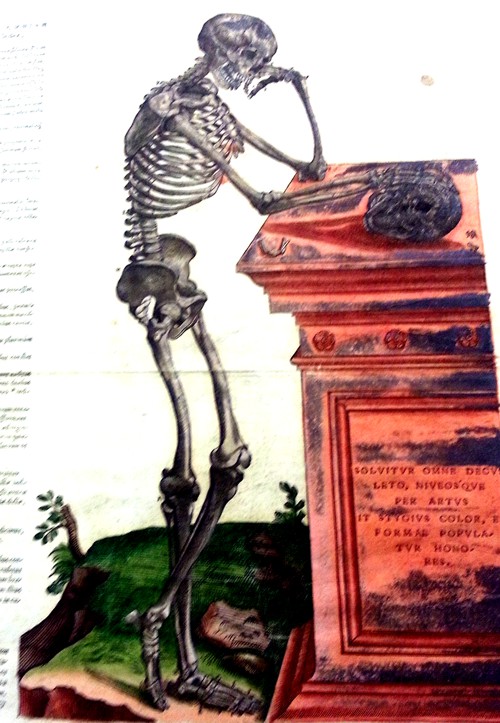
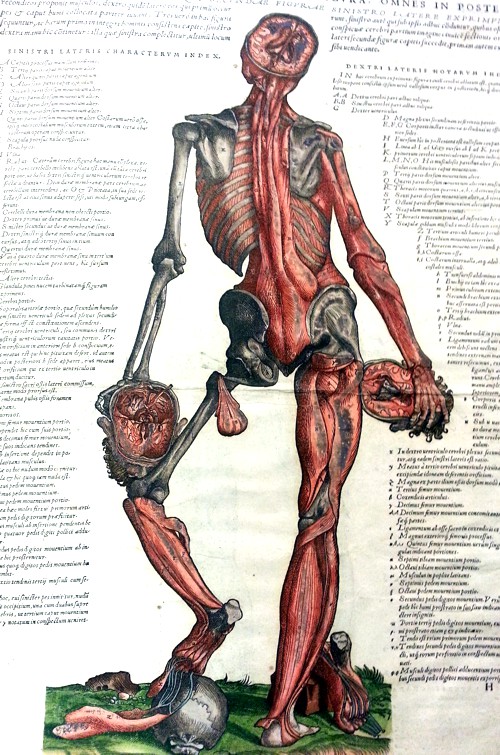
Then we had a pristine copy of Robert Hooke’s Micrographia (1665). The subtitle is lovely.
“Micrographia: or some Physiological Descriptions of Minute Bodies made by magnifying glasses with Observations and Inquiries thereupon.”
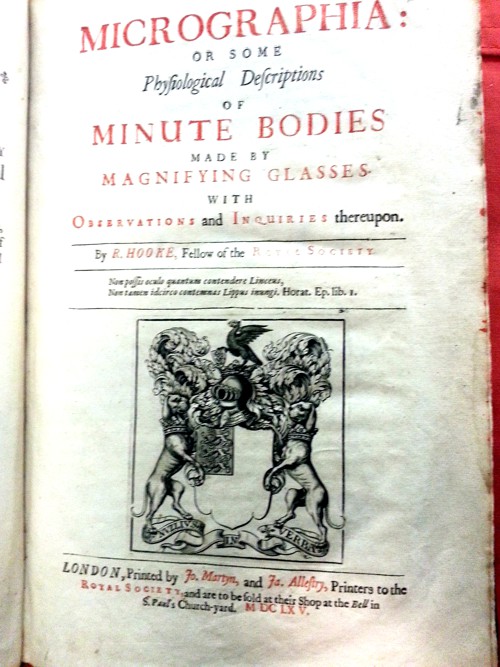
The huge fold-out of a louse holding a human hair (actually it says “a man’s hair”) showed spectacular detail (and we managed to unfold and refold it without tearing it).
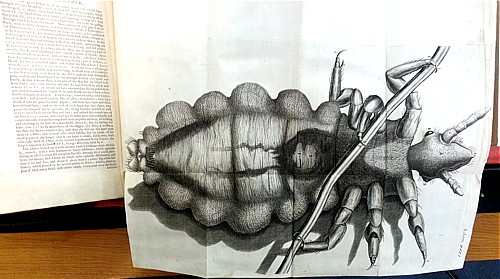
|
Then we got taken to Fitzbillies for dinner. They are famous for their high calorie, super-sticky chelsea buns. I got four to take home. |
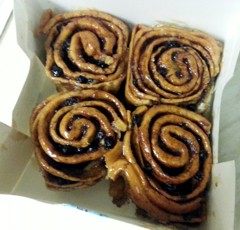 |
The talk was about why we know little about the effect of diet on health. Despite the large number of talks at the Cambridge Science Festival, this one had sold out (well, it was free). The hall was quite big and the audience was genial. The examples of absurd confusions of correlation and cause that I showed seemed to go down quite well.
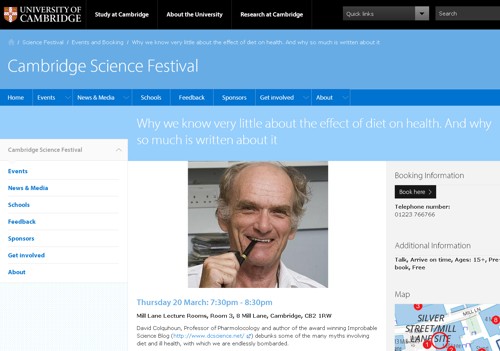
Later my host, Yvonne Noblis, sent me some (doubtless cherry-picked) feedback she’d had about the talk.
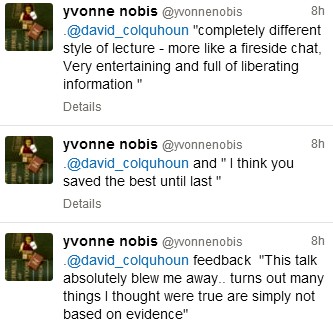
2 April 2014
Health minister, Jeremy Hunt, said we should have Chinese medicine paid for by the NHS. To be fair, he did say that should be done only if there is good evidence. The problem is, who do you ask for the evidence? Once again, NICE’s biggest mistake came home to roost. I was asked to speak on the BBC Radio 4 programme, the World at One, and the ‘balance’ was provided by Martin Underwood, who chaired the NICE guidance group with recommended acupuncture. I wrote about that quite a lot at the time: see
NICE fiasco, part 2. Rawlins should withdraw guidance and start again
The NICE fiasco, Part 3. Too many vested interests, not enough honesty
Since then, I went into the evidence for acupuncture in much more detail. The result was a proper peer reviewed paper:
Acupuncture is a theatrical placebo: the end of a myth
That’s the most popular post ever with almost 30,000 views on the blog alone, as well has people who read it in the journal.
Unfortunately Prof Underwood does not seem to have read it. He stuck with his original assessment that acupuncture provides a modest benefit for low back pain and then went on to attribute most of it to the placebo effect! He also indulged in quite unjustifiable subgroup analysis, by alleging that a small subgroup responded to acupuncture. Time ran out, so there was no time to point out that these were probably the people who got better anyway.
Listen to the World at One interview, with Martha Kearney
Another interview
Then I got asked to do a pre-recorded interview for the local radio station, Radio Three Counties. The presenter, Roberto Perrone was great. Here is his introduction and the full interview.
| Should the NHS be spending money on Chinese medicine?
The Health Secretary Jeremy Hunt says where there is good evidence for the impact of it, then we should do so. You’ll see these so-called traditional Chinese herbal remedy shops in High Streets across the 3 Counties – but do they work? Some offer, the claim, treatments for back pain, psoriasis, hair loss – in fact, there’s not a lot they don’t claim to cure! I asked Professor David Colquhoun is Professor of Pharmacology at University College London if these Chinese remedies work? “No, actually” |
I had a long conversation about these matters with journalist Victoria Lambert, who, next day, had a good piece in the Telegraph, Has the Minister for Magic Jeremy Hunt gone too far?.
3 April 2014
Some good news, to counter all the politics. In 2011, I found a graph from the Financial Times that showed a drastic decline in NHS funding for homeopathy. It has now been updated and extended by the excellent Nightingale Collaboration . In the late 1950s, homeopathy was essentially dead. After a generation of make-believe medicine. it’s almost back to where it belongs. Now we can get on with something more interesting.
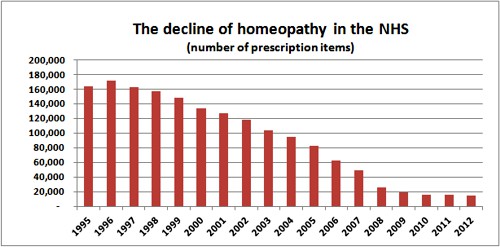
15 April 2014
Longish gig on BBC Radio 5 Live, again about Jeremy Hunt’s pronouncement about Chinese Medicine on the NHS. A radio van parked outside the lab -impressive technology. Talk shows, and their hosts, are a menace to public health. Have they never read the BBC Trust report on false balance? It seems that it’s totally ignored: it’s had no detectable effect.
I did my best against a deluded Chinese medicine teacher at Middlesex “university”, and a string of even more deluded callers. You can see some of the make-believe taught at Middlesex University in More quackedemia. Dangerous Chinese medicine taught at Middlesex University.
The bad thing was that I was supposed to be recording a piece on acupuncture for Trust Me I’m a Doctor. After talking about it for an hour they cancelled at short notice. The BBC can be rather free with other peoples’ time.
24 -27 April 2014
To Krakow, for the Neuronus meeting. On the afternoon we arrived I was asked by the organiser to give an interview to a Polish newspaper, Gazeta Wyborcza, which took place at Cafe Europejska on Market Square.Then we got a tour to Collegium Maius. the oldest part of Jagiellonian university (founded 1364 by Casimir III the Great in Kazimierz). The clock wasn’t working but you can see it in action on YouTube.
I had to give the opening talk, on “Inference of mechanisms from single ion channel observations. New light on the mechanism of partial agonism “. Then later, a talk on “The crisis of reproduculility. Why is so much published science wrong? As usual, the latter seemed to be more popular (no algebra).”
This was our first visit to Poland. Click the picture for an album of photographs of Krakow.
20 – 23 May 2014
To Nottingham for ‘Circling the Square’ meeting. It was about “Research, politics, media and impact” and hosted by the Science, Technology and Society Priority Group at the University of Nottingham. I was in a panel discussion, along with Athene Donald, whom I met face to face for the first time. It was about “A good news story from science? – Researchers facing the media“. I talked mostly about the sad fact that hype in the media is more the fault of authors (and PR zombies) than it is the fault of journalists. I also met Sylvia Mclain for the first time.
The video is now online.
28 May 2014
To Guildford, for a Skeptics in the Pub talk, at The Stoke Pub & Pizzeria
Continued. The diary will now continue on a new page: The diary, June 2014 – May 2015.

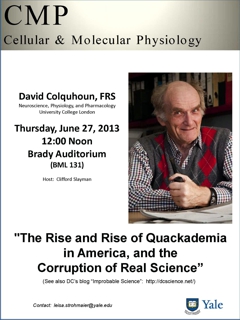
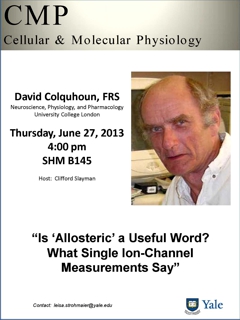
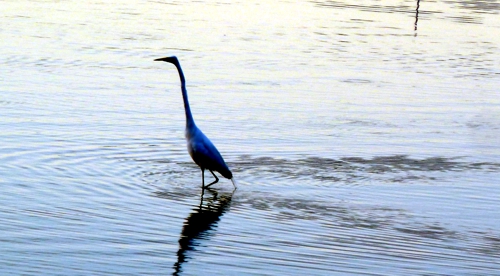

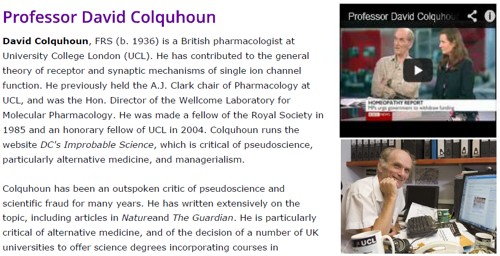
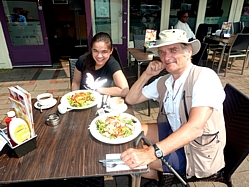
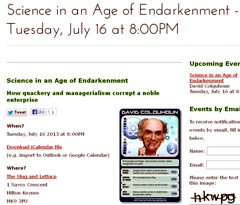
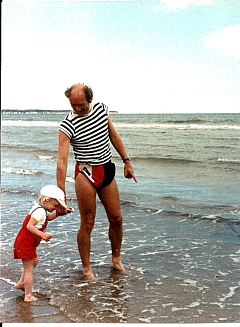
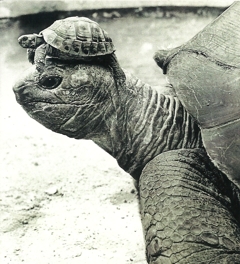
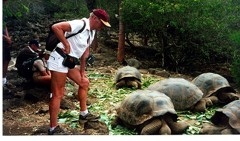

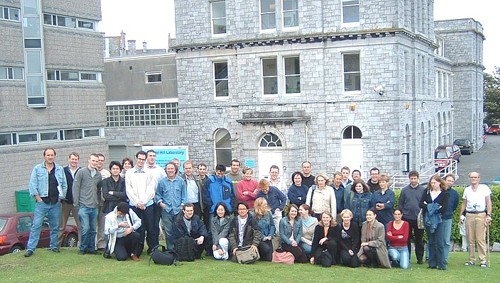
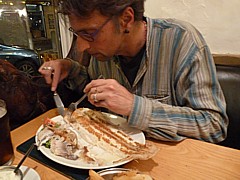
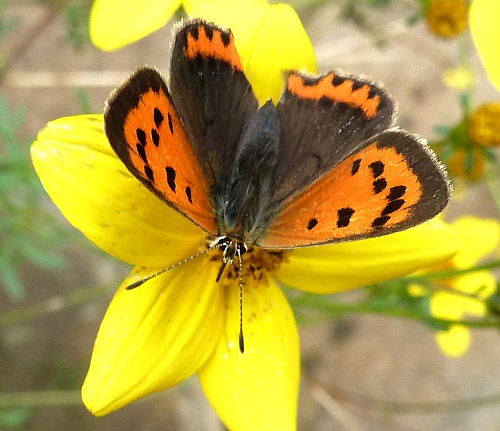
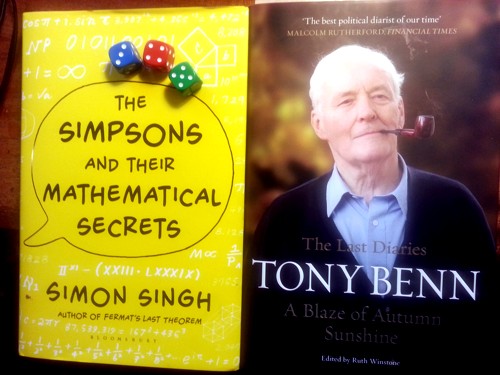
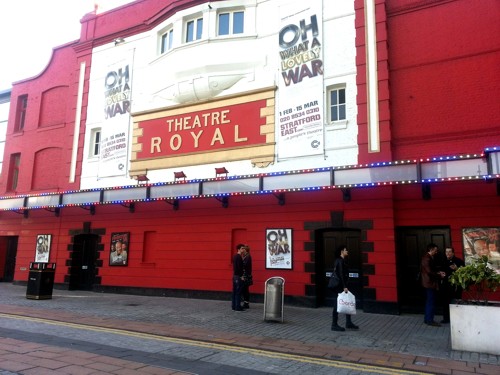
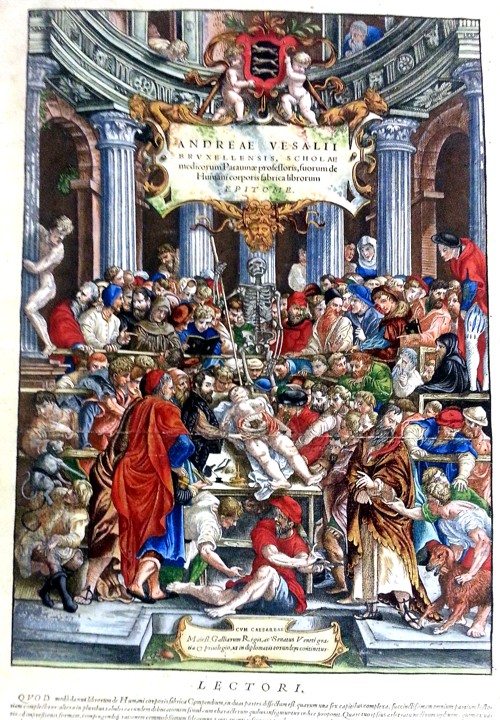
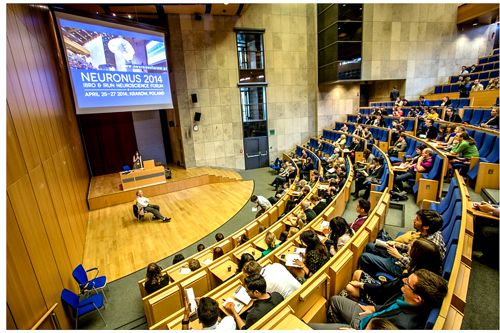

*I went to visit Rosi Sexton about by back problems. Although she trained as an osteopath she is 100 percent clear about what’s evidence and what isn’t.
So were you treated? Was it based on osteopathy? Did it help? You didn’t say.
What evidence for the efficacy of osteopathy is she 100% clear about?
[…] It is a pleasure to wish a Happy Birthday today to my friend Professor David Colquhoun, who as he reaches the palindromic age of 77 is still fighting the various fights for good science – and reality in general – and against ‘Unreality’, managerial bullshit, Prince Charles and his ‘knight-starved’ toadies, and all sorts of other things. To see the kind of pace David is maintaining (which makes me tired just to read about it) see the ‘Diary’ page on his blog. […]
@CrewsControl
I got examined and given some exercises. There was no difference that I could detect from what a physiotherapist would have done (except for that lunatic fringe of physiotherapists who push acupuncture). Osteopathy has a bad reputation because of its quackish origins, and too many of them go for absurdities like acupuncture and, worse still, craniosacral nonsense. Rosi is certainly not one of them.
According to the Bronfort report, all manipulative therapies have much the same success rate. One suspects that it is not very high for any of them. The evidence base for all manipulative treatments is pretty bad. All one can do is pick someone who doesn’t talk palpable nonsense. Rosi is one of them.
I’m not under any illusions that much can be done, given the state of my lumbar spine, but exercises that help one to stand straighter make some sense.
[…] on the matter. His introduction to the debate was his usual make-believe. Sadly it made much of an exhibit at the Royal Society Summer Science exhibition -a bit of bait and swich by […]
I’m glad to hear that Hunt’s had a change-of-reality, though the cynic in me wonders if his explanation of how he signed the motion by mistake was devised following discussion with some Scot with a colourful vocabulary.
*Re: 7-14 September
I didn’t know David O had moved to France. And has someone told the MRC if the Institute at Mill Hill ‘has folded’??! I thought they were supposed to be moving to Paul Nurse’s new National Temple of Important Research across from you in the Euston Road?
BTW, the Cairn Research blog also has a post on the Plymouth Course
@DrAust -thanks for that. I’d intended to link to the Cairn Research blog. That company has a long history of supporting the course.
Re Your 5th Dec post on Nelson Mandela
“Nasty Party” is back. I rode into work in London the morning to see a convey of large vans with IMMIGRATION ENFORCMENT on their sides. I am sure that I do not wish to live in a country that has such things. Nelson Mandela got rid of apartheid, looks like the Tory’s are bringing it back!